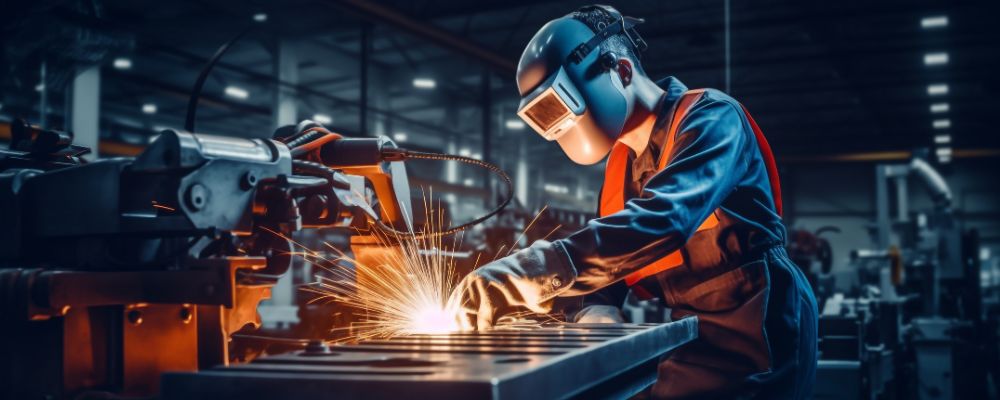Remanufacturing: An Essential Strategy for Modern Manufacturing

Navigating the Evolving Landscape of Manufacturing
In the fast-paced world of manufacturing, where priorities are constantly shifting towards new technologies, efficient supply chain management, and adapting to evolving market demands, the strategy of remanufacturing often takes a back seat. Yet, this somewhat overlooked approach presents immense opportunities for manufacturers across various industries. It’s not just about recycling or repairing; it’s a comprehensive strategy that can lead to significant revenue growth, operational efficiency enhancements, and notable contributions to sustainable business practices. For manufacturers looking to stay competitive and relevant, understanding and implementing remanufacturing practices is becoming increasingly vital.
Understanding Remanufacturing
Remanufacturing is a transformative process where used or worn-out products and components are meticulously restored to a condition that matches or surpasses their original new state. This process encompasses a systematic approach that includes disassembling the items, salvaging usable parts, conducting thorough cleaning, meticulous repair, reassembly, and stringent quality assurance testing. It transcends basic repair or refurbishment, striving to achieve a standard that rivals or exceeds the original quality.
The Industrial Machinery & Equipment Industry’s Approach
In the realm of industrial machinery and equipment, remanufacturing plays a crucial role in extending the lifespan of heavy-duty machinery. This process often involves not just restoring machinery to its original specifications, but also updating it to meet current technological and efficiency standards. Challenges in this sector include managing the complex logistics of large-scale equipment, ensuring that updated components are compatible with older models, and guaranteeing that remanufactured machinery meets rigorous safety and performance standards. This approach not only maximizes the utility of industrial assets but also significantly reduces environmental impact compared to manufacturing new equipment.
Remanufacturing vs. Refurbishing
It’s crucial to distinguish between remanufactured and refurbished goods. Refurbishment typically involves the replacement of failing components, whereas remanufacturing is a more comprehensive process where most or all components are replaced, and the product is restored to a state indistinguishable from new ones.
The Growing Relevance of Remanufacturing
This market, particularly in the United States, is expected to grow robustly, with projections indicating a 6% annual compound growth rate through 2025. Interestingly, around 90% of this activity is concentrated in the business-to-business (B2B) sector.
Leading Industries
The automotive industry emerges as a leader in remanufacturing activities, constituting a significant portion of the global remanufacturing sector. However, this trend is not confined to just automotive; it spans a range of industries from aerospace to electronics and beyond.
Examples of Products
- Heavy-Duty Engines and Equipment: Central to sectors like manufacturing and construction, the remanufacturing of heavy-duty engines and equipment such as bulldozers and cranes offers enhanced longevity and efficiency, adhering to stringent safety and environmental standards.
- Aircraft Components: The aviation industry, faced with high costs and part shortages, is increasingly turning towards remanufactured components, which offer a cost-effective alternative to new parts.
- Automotive Parts and Engines: The automotive sector has seen a surge in remanufacturing, with thousands of U.S. companies involved in this segment, often outpacing the production of new parts.
- Medical Devices: Major companies like General Electric and Stryker are actively engaged in remanufacturing medical devices, extending the life of critical equipment like MRI and CT scanners.
- Office Furniture: The office furniture industry is not only remanufacturing items but also customizing them to meet specific business needs.
- Electronics: The technology sector, including computing and communication devices, is embracing remanufacturing as a strategy to extend product lifecycles and reduce environmental impact.
The Multifaceted Benefits of Remanufacturing
- Contributing to a Circular Economy: Remanufacturing plays a pivotal role in fostering a circular economy by preventing products from ending up in landfills. By giving a second life to products, it reduces waste and conserves resources, embodying the essence of sustainability.
- Economic and Environmental Sustainability: This practice aligns with the broader goals of reducing resource consumption, minimizing greenhouse gas emissions, and complying with regulatory standards. Remanufactured products offer an eco-friendly choice to consumers and demonstrate a company’s commitment to environmental stewardship.
- New Revenue Streams and Job Creation: Many corporations, including industry giants like Cisco Systems and Caterpillar, have tapped into new revenue opportunities by adding remanufacturing to their business models. This sector also contributes significantly to employment, with hundreds of thousands of jobs attributed to remanufacturing activities globally.
- Cost Reduction and Energy Savings: For manufacturers, remanufacturing can lead to considerable savings in raw materials, energy, and water. It’s estimated that remanufacturing parts consume up to 85% less energy compared to producing new ones. This cost-effectiveness extends to consumers as well, with remanufactured products often being more affordable than their brand-new counterparts.
- Efficiency and Quick Turnaround: Since remanufacturing builds upon existing materials, the production time is generally shorter compared to new manufacturing. This efficiency not only benefits manufacturers but also ensures quicker availability for consumers, particularly in times of product shortages.
Challenges and Future Prospects
Despite its numerous advantages, remanufacturing faces certain challenges. These include consumer perceptions that may still favor new products, the complexity of establishing effective take-back and remanufacturing processes, and the availability of parts, especially in the wake of global supply chain disruptions.
However, the future looks promising. As industries and consumers alike become more environmentally conscious and regulatory pressures mount, remanufacturing offers a viable, sustainable, and economically beneficial alternative to traditional manufacturing practices.
For manufacturers willing to navigate its complexities, it represents not just a trend but a strategic choice that can lead to growth, innovation, and a distinguished place in an increasingly eco-conscious market.
Elevate Your Remanufacturing Strategy with WM Synergy
In today’s dynamic manufacturing landscape, remanufacturing brings unique challenges and opportunities. WM Synergy’s ERP solutions are tailored for this industry, helping you navigate these complexities with enhanced efficiency. Join the ranks of industry leaders who have revolutionized their operations with our cutting-edge solutions, which are specifically geared to reduce time-to-market, improve product quality, and foster sustainable practices.
Are you ready to take your remanufacturing processes to the next level? Contact us today and discover how WM Synergy can drive innovation and efficiency in your business.


